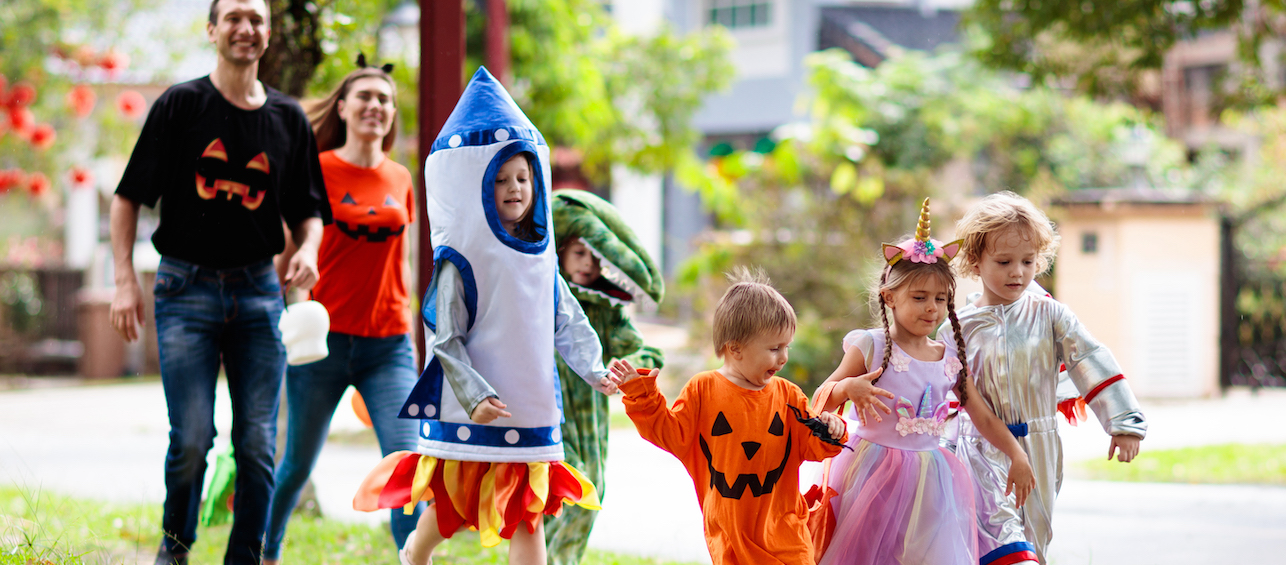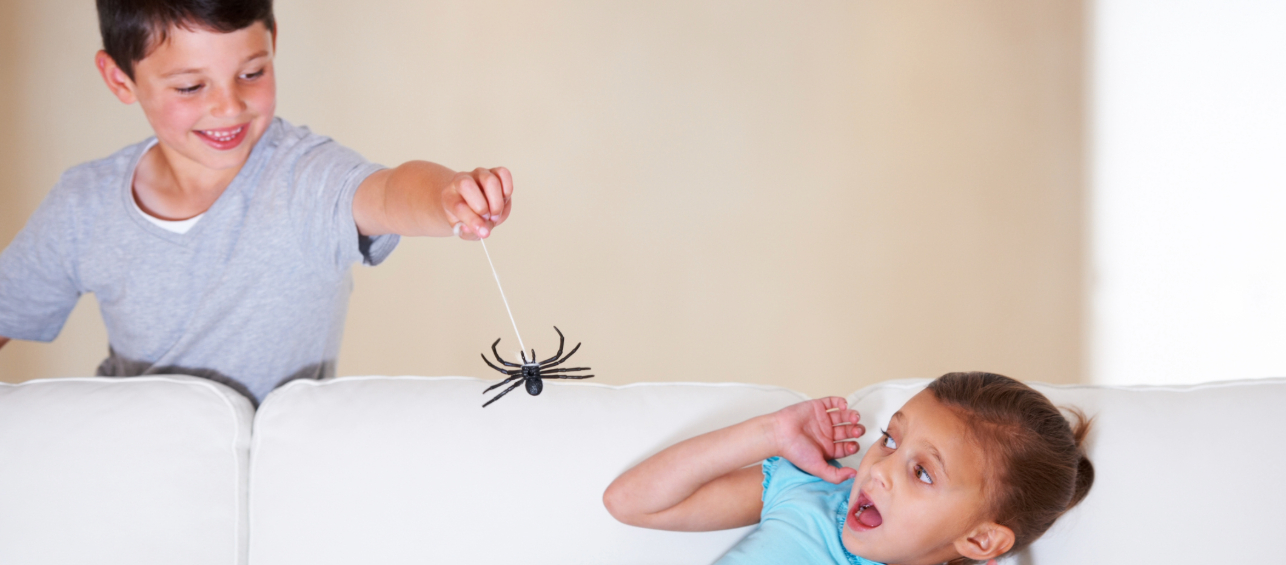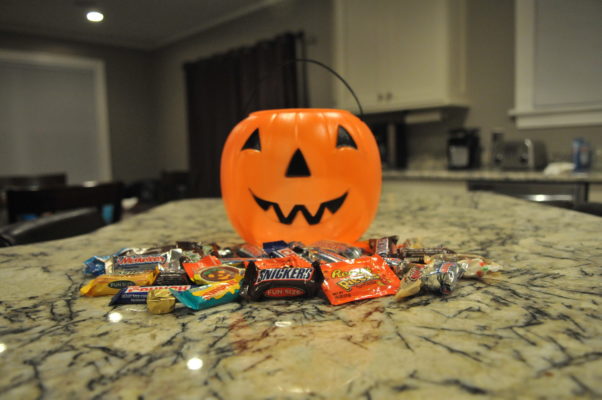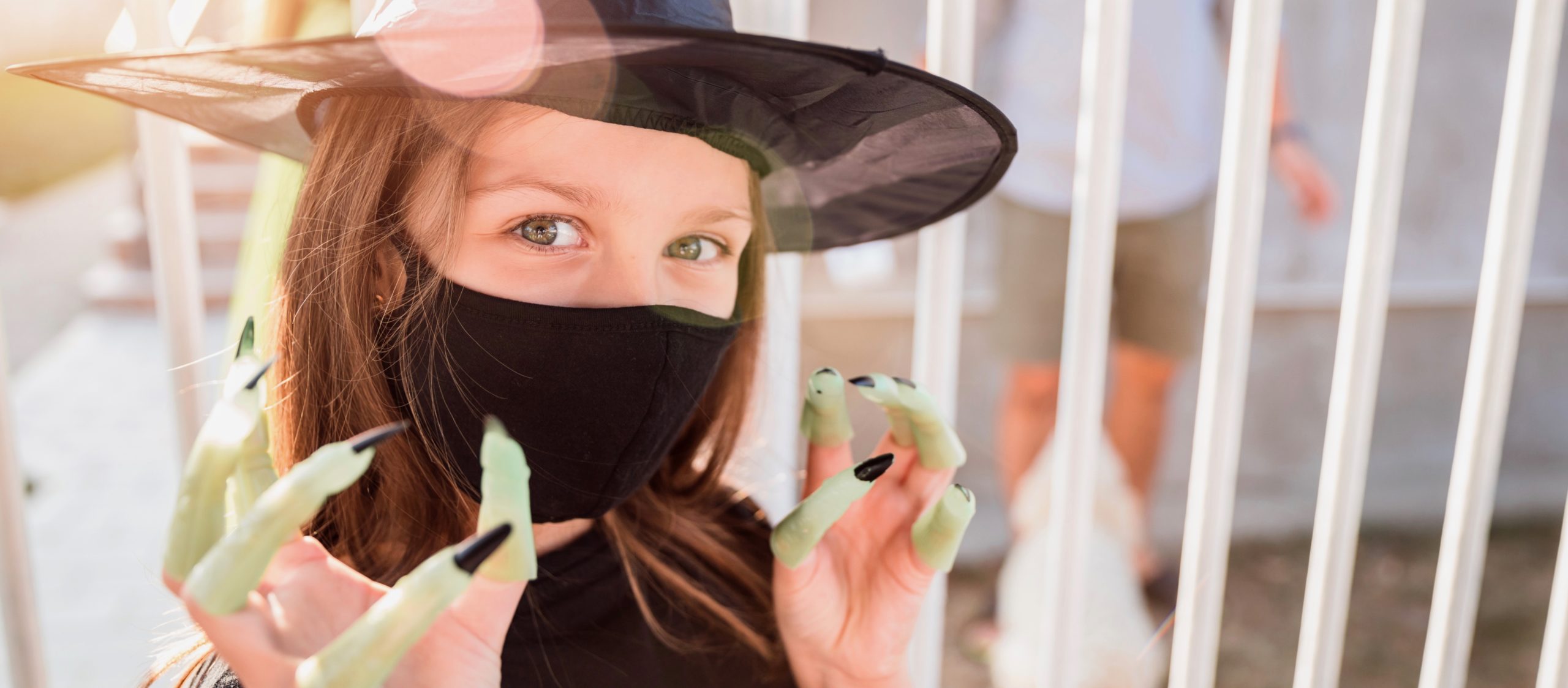Halloween is a unique time of year for kids. Usually, we try to shield them from scary movies and books because we want them to be able to sleep at night. But then around Halloween, all of these unexpected and spooky things are fostered. It’s everywhere and often unavoidable around the neighborhood and in stores.
It can be fun for most kids, and most kids DO want to participate in some way. But for some who are young, easily startled, and/or neurodivergent, it can be challenging. Some children have sensory processing differences, and inherent in this holiday are flashing lights, loud noises, and scary and unexpected sights. Most kids are not used to walking around at night. Not to mention the social demands of trick-or-treat. We teach kids to not engage with strangers and then all of a sudden, it’s encouraged!
If your children want to participate, but are a little uncertain, here are some tips for a successful Halloween season:
Tips for Helping Kids with Autism Enjoy Halloween
1. Prepare ahead of time
Increasing predictability decreases anxiety.
Teach your kids about the holiday. Read age-appropriate books that explain that monsters aren’t real and costumes are pretend. Many kids with autism are visual learners, so take actual pictures, show, and explain! For example, you might take pictures that show your kids’ costumes, the houses you’ll visit for trick or treat, and other decorations or situations they may encounter. Then talk about it over and over again. Reiterate that even though we may see scary things like costumes, masks, and decorations, it doesn’t mean they’re real. I also recommend allowing neurodivergent children and their siblings to wear their costumes ahead of time to get used to how it feels. You may want to consider walking them along the route that you plan to take during trick-or-treat.
2. Think about their sensory processing needs
Consider your kids’ sensory processing needs and try to plan around them.
- Costumes
One of the biggest things to think about is the costume. Most kids are more motivated to wear costumes they’ve picked out, but they are often scratchy and smell different. I recommend cutting out tags and buying a bigger size, that way they can wear their comfortable clothes underneath. Perhaps choose one without a hat or wig if you know that bothers them. If they don’t want to wear a costume, maybe they’d like to wear a t-shirt or pajamas with their favorite character instead.
- Trick-or-treating
The preparatory things we talked about above will go a long way in helping kids to enjoy trick-or-treating. In addition, think about what typically upsets your children. Is it loud noises? Consider bringing headphones. Is it visual stimuli? Perhaps skip the houses with flashing lights and fog machines. Maybe bring a fidget toy for an added distraction, or a comfort item to help your kids feel brave. Less is more. Your children don’t need to walk to 20 houses to have a good time. Sometimes keeping trick-or-treat short is the best way to ensure success.
3. Consider their safety
Be prepared for a possible separation with some clear identifiers.
Some kids with autism tend to wander, particularly when they feel overwhelmed. Even the most verbal children can lose their communication skills in an anxiety-provoking situation. I suggest being prepared for this scenario, just in case. Because kids are harder to identify in costume, here are a few recommendations:
- Have your children wear identification tags, place a piece of paper with your information in their pockets, or if it’s in the budget, use an air tag or GPS bracelet.
- Take a picture of your children in costume. This would allow you to have a current picture of them in case they get lost.
- Have your children wear something distinguishable, like a glow stick or light-up shoes. Make sure they know what you’re wearing too. You might consider wearing something light-up as well.
- Ahead of time, talk about a meet-up spot in the event you and your children get separated.
4. Make it your own
Be flexible! Your Halloween celebration does not have to include conventional traditions.
There are so many social demands and cultural routines associated with Halloween. We wear costumes. We say “trick or treat” and “thank you.” I encourage families not to get hung up on these things. Families should enjoy this season in whatever way makes sense for them, and let go of the things that don’t.
For example, trick-or-treating is not a requirement to celebrate Halloween! You can make fun food and watch a fall-themed movie, paint or carve pumpkins, or perhaps try a trunk-or-treat event because they’re usually less crowded and often occur during the day.
The bottom line is to allow yourself and your kids to be flexible with Halloween, and create new traditions that make sense for your family!






